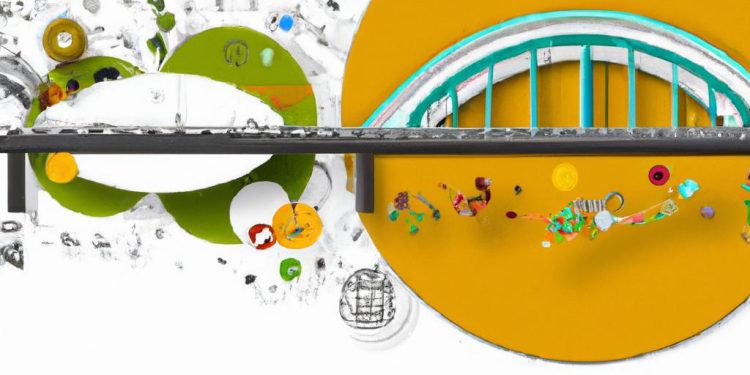As humans embarked on the quest for knowledge thousands of years ago, disciplines were born – fragments of the great puzzle of cosmos, life, and society. Ideological compartments stored cosmos’s empyrean mysteries in Physics; life’s scarlet secrets in Biology; society’s kaleidoscopic patterns in Sociology. As the centuries advanced, these disciplines spiraled into depths of intricacy, often diverging into insular domains. However, in the landscape of the 21st-century knowledge enterprise, a radical shift has been whispering a new symphony, a harmonious confluence of the fragmented disciplines. Welcome, dear readers, on a voyage into an exciting arena—the panorama of integrated learning. Prepare to be intrigued, as we uncover this game-changer in transcending the walls between disciplines, illuminating how the future of education may well lie in the contiguous bridging of these boundaries. Fasten your seatbelt for a journey into the fascinating world of interdisciplinary education, a universe where integrated learning is more than just a buzzword—it’s a profound revolution in how we perceive, process, and propagate knowledge. Today’s academic landscape is marked by the intersection of diverse disciplines, creating a mosaic of knowledge that is as vast and complex as it is fascinating. With the rapid advancement in technology and ever-evolving demands of the industry, it’s no longer sufficient to have expertise in just one field. To thrive, students and professionals must adopt an integrated approach to learning, breaking down traditional disciplinary boundaries and developing a broad, balanced understanding of myriad subjects. Making sense of the intersections, however, can seem like a daunting task.
Educational innovation, wielded intelligently, can serve as a powerful tool to navigate this intersection. Integrated learning — the process by which students learn about a subject across various disciplines — empowers individuals to connect knowledge from different fields, fostering a holistic perspective that’s invaluable in today’s interdisciplinary world. Harnessing this power doesn’t just mean merging different subject areas into one curriculum; it calls for innovative teaching methodologies, optimized learning environments, and digitally advanced educational resources. Here are a few strategies to facilitate effective integrated learning:
- Encouraging collaborative learning through team projects that draw on diverse expertise and foster inter-disciplinary understanding.
- Implementing flexible curriculum structures that allow students to explore subjects outside their primary discipline
- Incorporating real-world scenarios in lessons to highlight the interconnectedness of different fields.
Concrete steps can be taken to achieve a balanced cross-disciplinary approach. Synchronizing disciplines should not be seen as a haphazard fusion but a calculated mingling involving careful planning and strategy. Aiming for a balance, allows students to grasp the principles of multiple disciplines without feeling overwhelmed or sacrificing depth of knowledge in one area for breadth in another.
Going forward, the future of education lies in a holistic approach to learning. By integrating various disciplines and leveraging the comprehensiveness, we can guide our students towards becoming holistic thinkers who can adapt to different roles, solve complex problems, and continue learning throughout their lives. This is not just a phase but rather a bright future we should all look forward to and work towards. Reflecting on the progress we have made, we can confidently say the shift has just begun, and there are still countless opportunities to innovate and repurpose educational methods to meet the demands of an ever-changing world. And so, we find ourselves at the edge of understanding, ready to chart a course into the unknown terrains of integrated learning. Bridging disciplines is no small task, it’s a journey that requires a spirit of inquiry, courage to take risks, and an unwavering belief in collaboration. It’s a voyage that dares us to break free from the silos of disciplines and dare to see how fields of study talk to each other, thread to thread, intersecting across ideas and concepts. We have merely skimmed the surface of this vast ocean, acknowledging its vast potential. Harnessing the future will require us all to walk this tightrope between disciplines, synthesizing and making connections in new, exciting ways. The road ahead lies in our hands. Let us mold it into a path of transcendence, where disciplines merge, intertwine, and illuminate the richness of an integrated education. Our journey, it seems, is only just beginning. So, here we are, on the precipice of the interdisciplinary era, our eyes set on the horizon of integrated learning. Adventure awaits.



